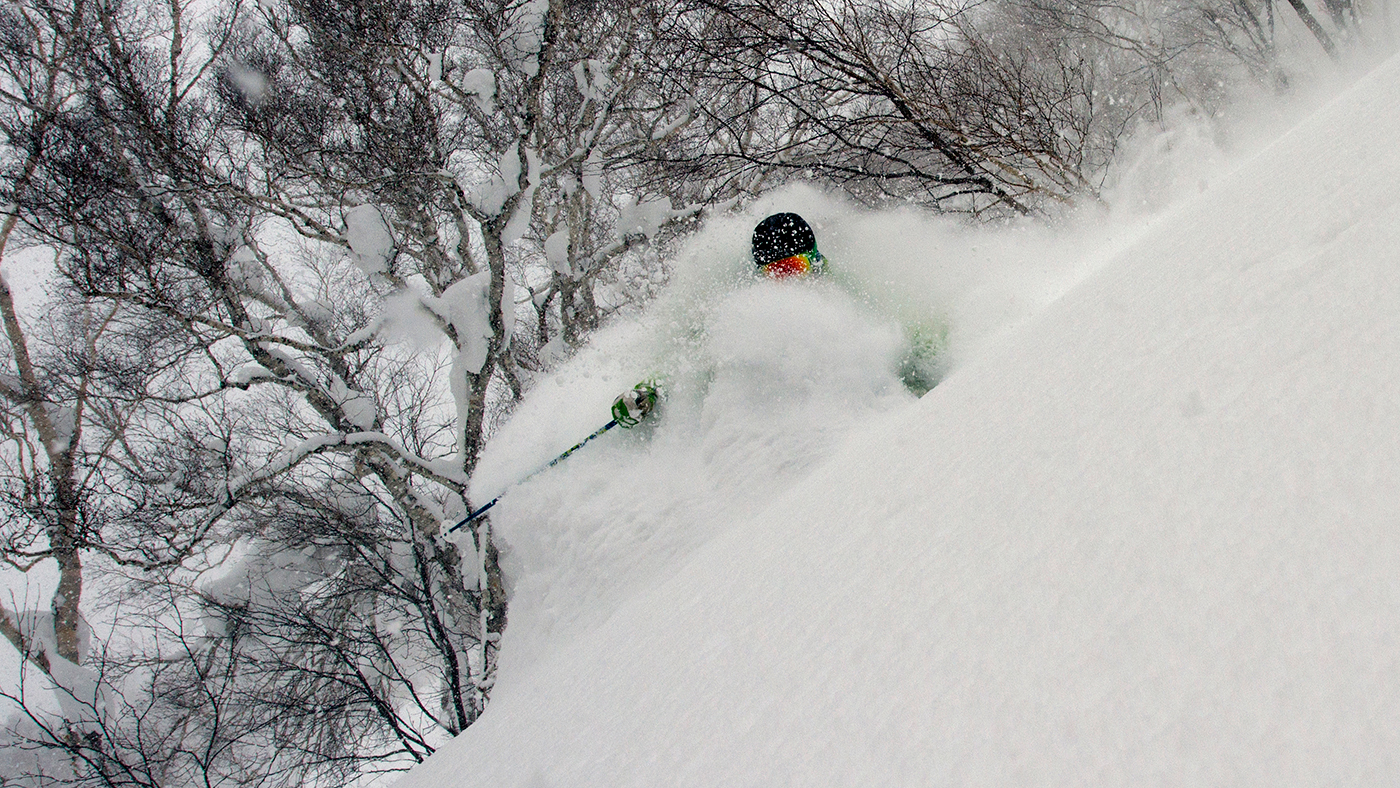Warren Smith's top ski fitness tips
Skiing involves unusual muscle movements, says The Jump's trainer. These three tests and stretches will get you in slope-slaying shape

A lot of ski instruction is pointless – and I say that as a ski instructor. Recently, I've been enjoying shocking people with that statement, but what I really mean is that teaching ski technique in isolation doesn't work. Over nearly 20 years of running courses, my team and I at the Warren Smith Ski Academy keep encountering the same issues that hold skiers of all levels back. And we realised it's not a problem of understanding or of putting instruction into practice, but one of biomechanical limitations.
Throughout the autumn, we toured dry and indoor ski slopes and ski shops around the UK with our Ski Technique Lab. We put people through three key biomechanical foundation tests, which we've been doing on courses in the Alps for years, and we were staggered by how few people had the range of motion and stability required for effective skiing. What was great about doing these tests before the ski season is how quickly a few simple exercises can fix the situation. If you're going skiing later this season, now's the perfect time to try them.
[[{"type":"media","view_mode":"content_original","fid":"105762","attributes":{"class":"media-image","height":"100px","width":"100px"}}]]
The Week
Escape your echo chamber. Get the facts behind the news, plus analysis from multiple perspectives.

Sign up for The Week's Free Newsletters
From our morning news briefing to a weekly Good News Newsletter, get the best of The Week delivered directly to your inbox.
From our morning news briefing to a weekly Good News Newsletter, get the best of The Week delivered directly to your inbox.
Test 1: Ankle flex
This is essential for balance over the skis. The old "benziknees" instruction doesn't help if you can't bend your ankles too – because with stiff ankles, you end up in the "back seat" position, with your weight over the tails of your skis, making it hard to initiate and control turns. Our drop test is simple: stand with your back and heels against a wall and make a note of your hip height, then slide straight down as far as you can before one or both heels lifts off the floor. Measure your hip height again and calculate the difference. The ideal range is between 6in and 8in, but the average result among skiers is just over 4in. It's also a safety issue – if you hit a bump you didn't see at speed, the sudden flexion could snap your Achilles or tear your calf.
People reported back to us three weeks later and just a few simple calf-stretches at home every day (especially on the leg where the heel lifted first) had improved their score dramatically.
Test 2: Lateral control
A free daily email with the biggest news stories of the day – and the best features from TheWeek.com
Ideally, the distance between your hips, knees and ankles should be the same when you ski. But controlling that isn't easy, because it requires two sets of muscles that are not used to being activated at the same time working together – the adductors and gluteus medius. You often see skiers with A-frame legs – the knees collapse inwards on each other – as a result of rushing to progress from snowplough to parallel skiing. The risk is that you're putting torque through your knee (a joint that's vulnerable to injury anyway), and your skis are travelling in slightly different directions, which can trip you up when you're skiing moguls or steeps or when they're submerged in powder.
Helpfully, the test is the same as the exercise. Stand, feet 30in apart, either in socks on a slippery floor or barefooted on two plastic folders on a carpet. Slowly (around ten seconds) draw your feet together – no jumping. Only six people out of 1,000 could do it first time without their legs shaking with the effort – they were professional skiers, but so were some of the 994 who struggled! A fortnight of practice and the shakes are usually gone.
Test 3: Leg steering range
An essential part of good ski technique is the ability to rotate your legs (and therefore skis) independent of your hips. A lot of skiers follow the direction of their skis and legs with their hips and then shoulders, especially in shorter-radius turns. On steep terrain, that means they can't finish off turns, the edges don't bite and they lose control. Plus, most people find they have one leg that turns inwards less than the other, so they have a weaker turn, which is bad for confidence.
The test is to stand on a line and rotate your feet first to the left, then the right, keeping everything above the thighs parallel to the line (have someone hold your hips). Borrow your kid's protractor and mark how far you turned. The average is 45° – but it needs to be up to at least 70°.
There's a simple stretch you can do: lie on the floor with your knees up. Rest one foot on the opposite knee – at first, that might be a stretch in itself – then pull it a little way towards your head. Eventually your calf will be parallel to your shoulders.
This is not about fitness or being strong. I did these tests recently with Jason Robinson and Gareth Thomas, who are preparing to appear on The Jump, and they both struggled with the lateral control test, because it's such an unusual movement. And these are ex-rugby players who still keep themselves in shape. Even Louis Smith, the Olympic medal-winning gymnast, had 80° rotation with one leg but only 30° on the other – and lo and behold, he could turn one way but not the other. The only competitor on The Jump with full range of motion was Jade Jones, the Olympic taekwondo champion. But the rest of them are working on it now!
And, by the way, I'm not being smug about this myself. I'm the worst at this type of stuff – I've snapped my Achilles and other things and I start rehab but, as soon as I feel vaguely OK, I want to get out and ski. But about a year ago, my partner Melinda got me into yoga and it has really helped me keep my range of motion as good as it was when I was younger.
This is an opportunity to give the power back to the skier – the paying customer – be they average, intermediate or an advanced skier who goes freeriding in the backcountry. What we want is for more skiers to improve their own technique before they come to us. I'm not worried about losing clients – these measures mean we can take people further. People always say kids learn like sponges, but if you have these basics sorted, adults can be equally receptive. We can start building on good foundations – skiing moguls, steep terrain – or customers can specialise in freeriding. Our five-day performance supergroup course is all off-piste in the nooks and crannies of Verbier, and we also offer special courses – powder skiing in Japan or heli-skiing in Canada.
WARREN SMITH is the founder of his eponymous Ski Academy, which operates courses in Verbier, Switzerland; Cervinia, Italy, and elsewhere. He is also assistant coach of the British Freeski Team, ski technique editor of the Telegraph Ski & Snowboard magazine, and ski coach on Channel 4's The Jump. He met his partner, Melinda Messenger, on the show.
-
 Trump fears impeachment if GOP loses midterms
Trump fears impeachment if GOP loses midtermsSpeed Read ‘You got to win the midterms,’ the president said
-
 Political cartoons for January 7
Political cartoons for January 7Cartoons Wednesday's political cartoons include plundering pirates, nomenclature legislature, and more
-
 Trump’s Greenland threats overshadow Ukraine talks
Trump’s Greenland threats overshadow Ukraine talksSpeed Read The Danish prime minister said Trump’s threats should be taken seriously